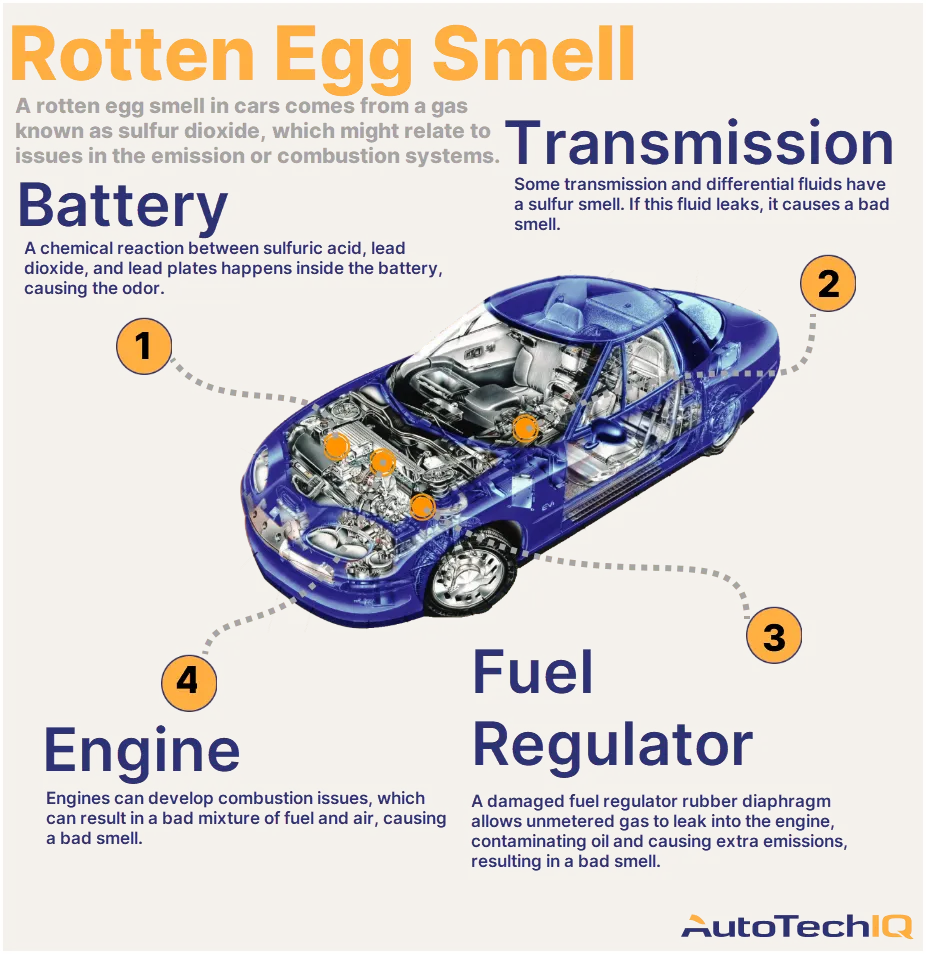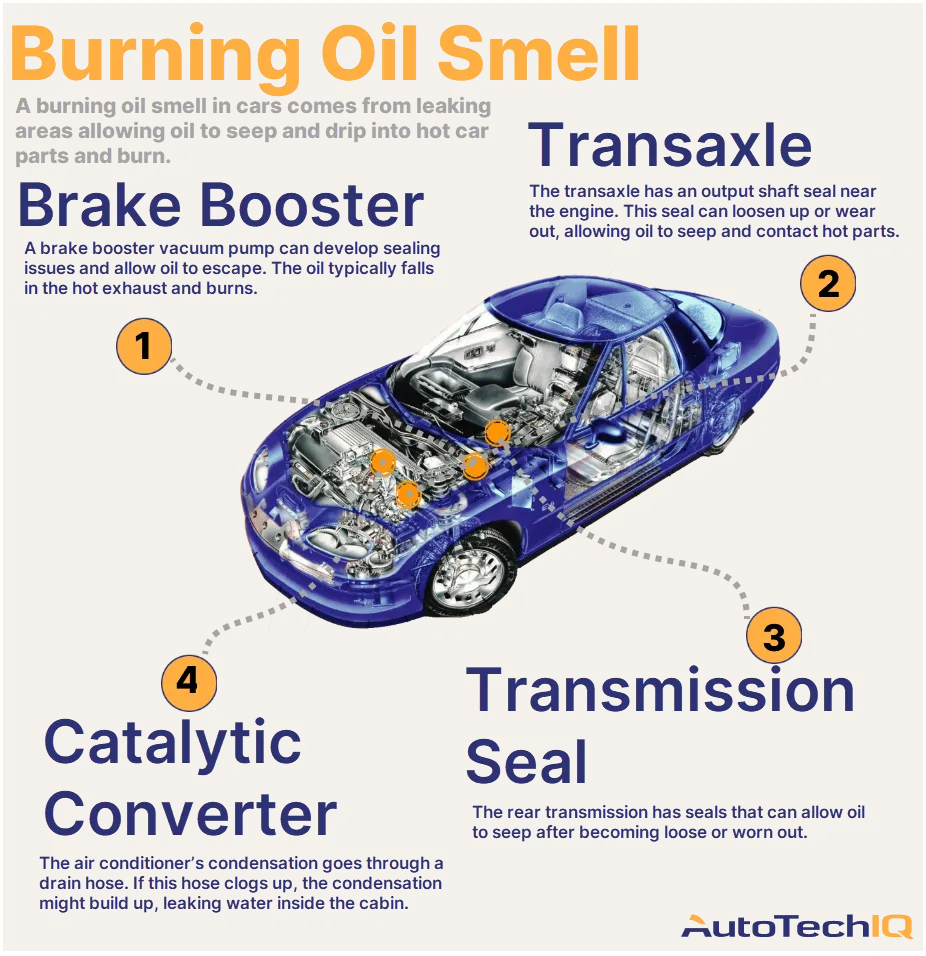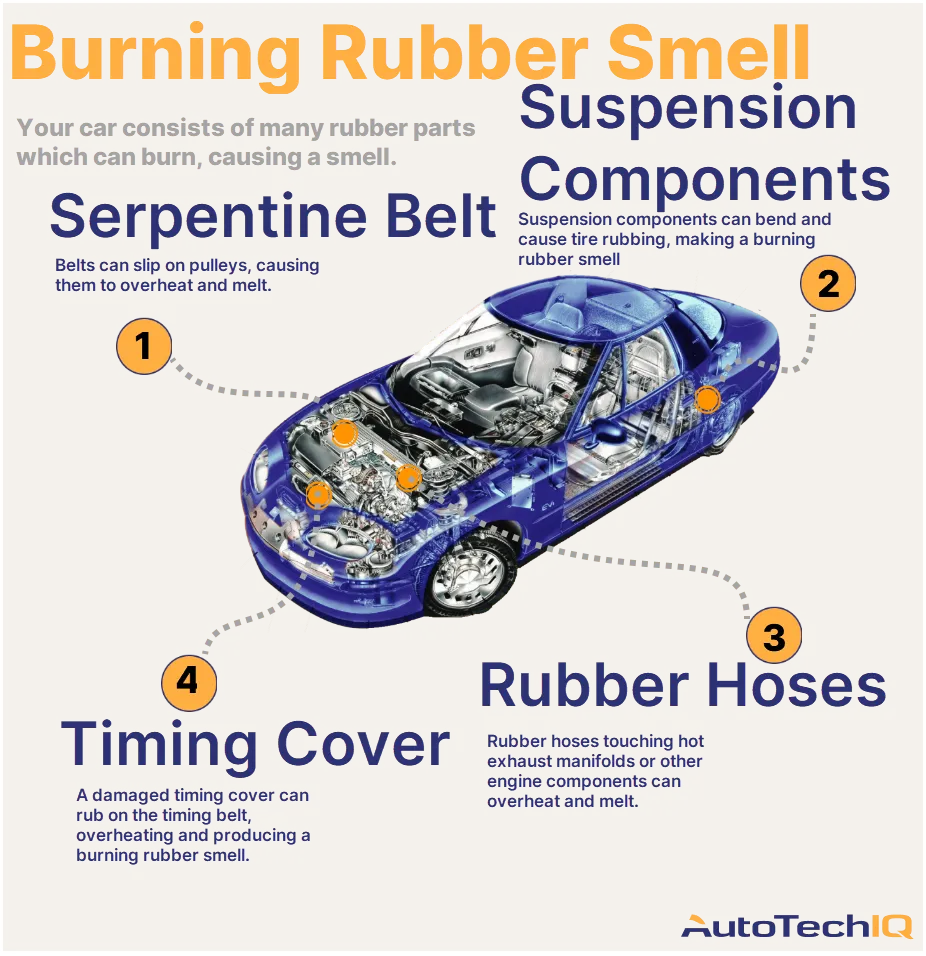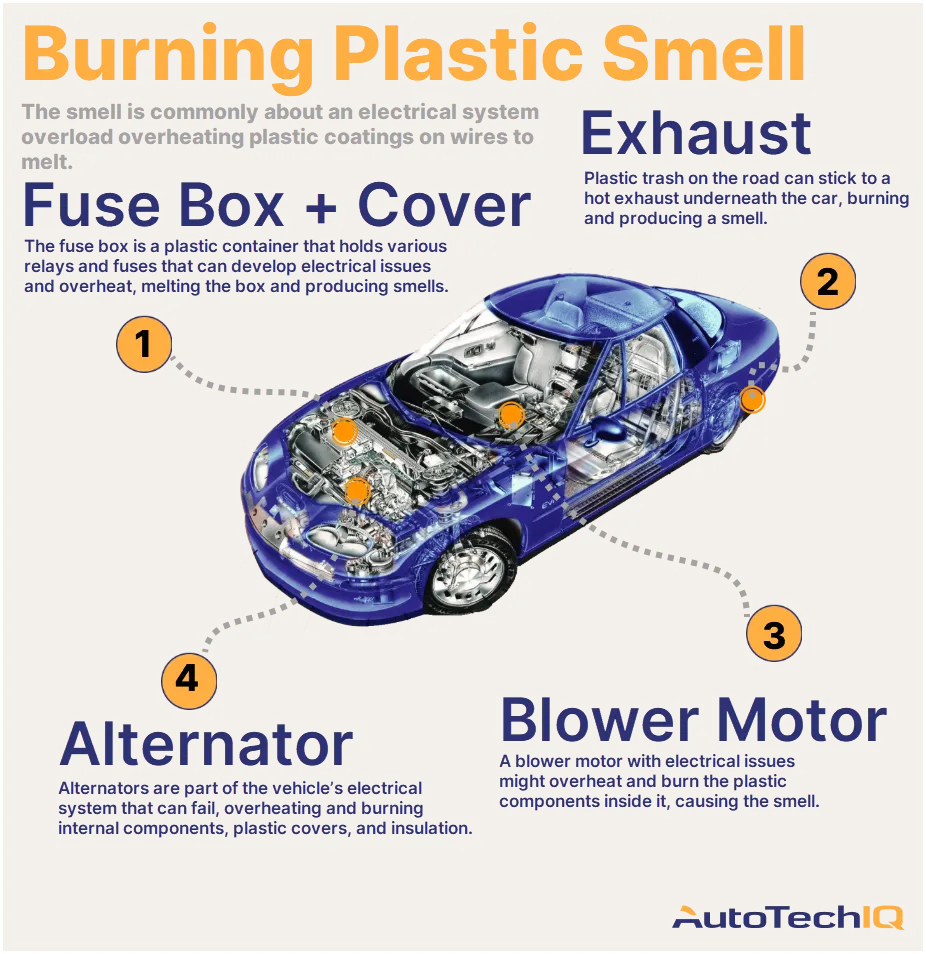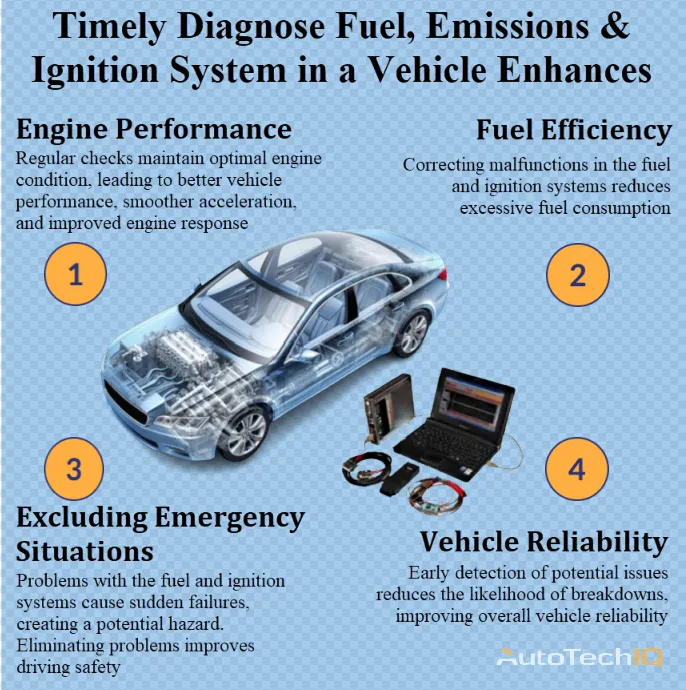
The Diagnose Fuel, Emissions & Ignition System in a vehicle is aimed at addressing and preventing several key issues related to the engine and exhaust system:
- Identifying malfunctions in the fuel supply system: This includes checking the fuel pump, injectors, fuel filters, and fuel lines. Problems in this system can lead to inefficient combustion, reduced power, and increased fuel consumption.
- Analyzing and resolving emission issues: The diagnostic helps detect problems that can lead to increased levels of harmful emissions. This is important for compliance with environmental standards and preventing air pollution.
- Checking the ignition system: This involves diagnosing spark plugs, ignition coils, and the ignition control system. Issues in the ignition system can lead to uneven idling, loss of power, and increased fuel consumption.
- Preventing unexpected breakdowns: Regular diagnostics help to prevent sudden failures in the car's systems, ensuring more reliable and safe operation.
- Saving on repair costs: Detecting and fixing minor issues early on can prevent more serious and costly breakdowns in the future.
- Optimizing engine performance: Proper functioning of these systems ensures optimal engine performance, improved traction, fuel economy, and reduced emissions.
Thus, the Diagnose Fuel, Emissions & Ignition System plays an important role in maintaining the efficiency, reliability, and eco-friendliness of the vehicle.


